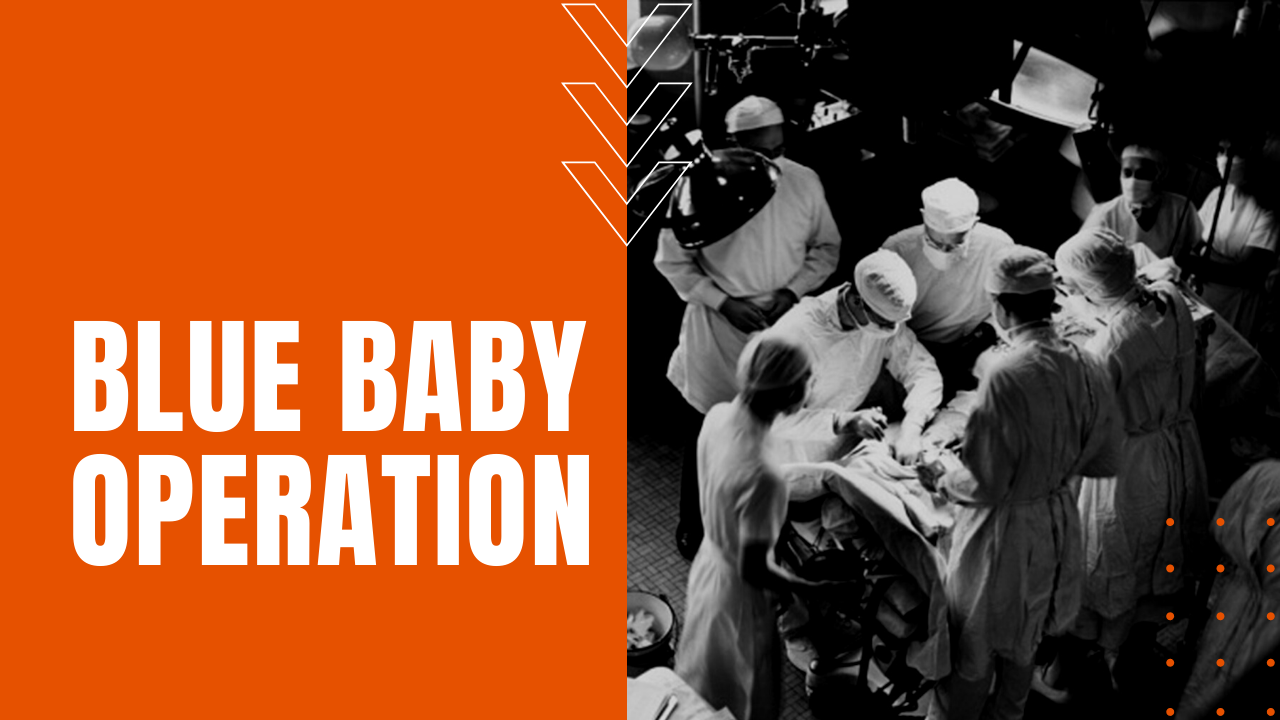The First Operation to Cure Blue Baby Syndrome

On November 29th, 1944, scores of Johns Hopkins surgeons and medical students crammed into the two-level observation gallery overlooking the Halsted clinic operating room theater.
For the next four and a half hours, they looked on as surgeons performed the first “blue baby” operation on a tiny and sickly 18-month-old named Eileen Saxon, who suffered from a condition known as Tetralogy of Fallot, which prevents blood from reaching the lungs for proper re-oxygenation.
Blue Baby Syndrome
The resultant congenital defect gives a distinctive blue cast to every part of the baby’s body, and before the groundbreaking surgery taking place in the operating room below, the congenital defect always resulted in death.
The assembled team in the ‘OR’ included lead surgeon Alfred Blalock, a 1922 Johns Hopkins School of Medicine graduate, Blalock’s indispensable technician, Vivien Thomas, chief surgical resident William Longmire, nurse Charlotte Mitchell and 24-year-old surgical intern Denton Cooley, who would later go on to become one of the world’s premier cardiac surgeons.
Pediatric cardiologist Helen Taussig was also in the room, who together with Blalock co-invented the shunt that hopefully would correct baby Saxon’s lethal condition. Taussig had originally theorized that patients suffering from Tetralogy of Fallot fail to have their patent ductus close off after a newborn starts to breathe on their own, which means their circulating blood fails to adequately reach the lungs.
With their synthetic shunt in hand, Blalock created an artificial ductus in Baby Saxon, by joining and shunting the patient’s subclavian and pulmonary arteries. After the shunt was successfully sutured in place and the cross-clamps removed from the shunted arteries, Dr. Taussig erupted into a litany of verbal excitement, exclaiming,
“Alfred Blalock, you damned son-of-a-bitch genius of a man! Baby Eileen’s pinking up like a glorious sunrise!”
While Blalock was originally ridiculed by his colleagues for trying something far too brazen and untried, Michael Edenburn, blue baby patient number 44 attested to the techniques’ effectiveness, when the 76-year-old businessman returned to Johns Hopkins for a visit, reporting that “My doctors tell me my blood chemistry is that of a very healthy 25-year-old.”
Along with saving thousands of innocent young live, Blalock’s pioneering procedure stands to this day as the precursor to modern cardiac surgery.
